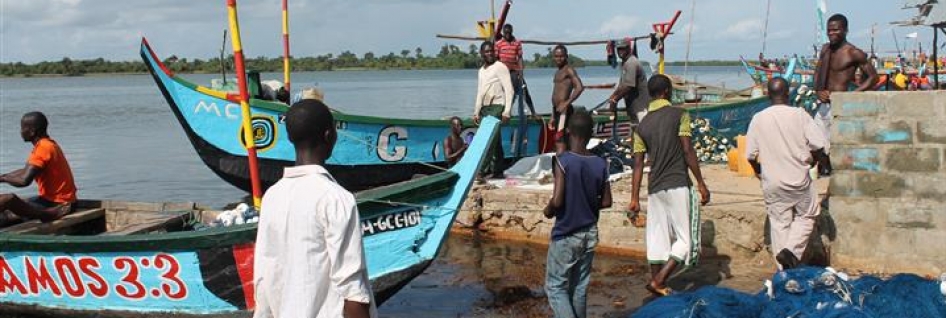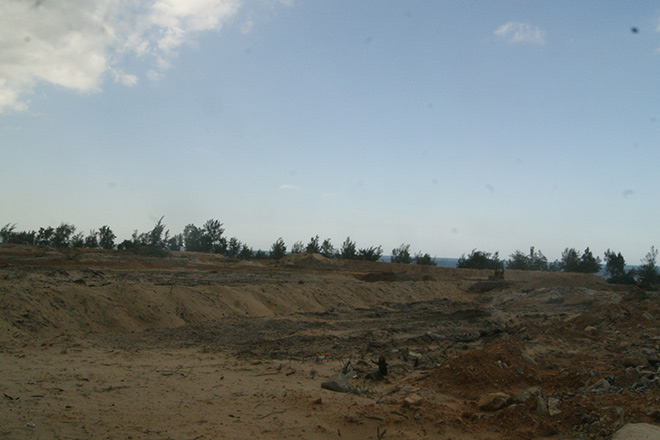MAP News Issue 349 – October 11, 2014
Partnering with mangrove forest communities, grassroots NGOs, researchers and local governments to conserve and restore mangrove forests and related coastal ecosystems, while promoting community-based, sustainable management of coastal resources. | |
The MAP News | |
Action Alerts: FREE MAP Mangrove e-cards CLICK HERE | FEATURED STORY UN report warns of ‘devastating’ effects from ongoing destruction of mangrove forests  The world is losing its mangroves at a faster rate than global deforestation, the United Nations revealed today, adding that the destruction of the coastal habitats was costing billions in economic damages and impacting millions of lives. In a new report launched today at the 16th Global Meeting of the Regional Seas Conventions and Action Plans, held in Athens, Greece, the UN Environment Programme (UNEP) warned that the deforestation of the planet’s mangroves was exceeding average global forest loss by a rate of three to five times, resulting in economic damages of up to $42 billion annually and exposing ecosystems and coastal habitats to an increased risk of devastation from climate change. “The escalating destruction and degradation of mangroves – driven by land conversion for aquaculture and agriculture, coastal development, and pollution – is occurring at an alarming rate, with over a quarter of the earth’s original mangrove cover now lost,” said UNEP Executive Director Achim Steiner. “This has potentially devastating effects on biodiversity, food security and the livelihoods of some of the most marginalized coastal communities in developing countries, where more than 90 per cent of the world’s mangroves are found,” he added. READ MORE AFRICA Study demonstrates value of mangroves for Liberia  LIBERIA – The Economics of Ecosystems and Biodiversity (TEEB) study for Liberia should focus on revealing the economic and cultural benefits gained from conservation or restoration of wetlands in five study sites along the coast of Liberia. This was the recommendation of 18 participants attending the TEEB Scoping Workshop for Liberia held in the country’s capital Monrovia from 10 to 11 June 2014, to identify policy questions that the TEEB country study would inform. Nearly 58% of the population of Liberia lives within 40 miles of the coast, dotted with mangroves, forests and reeds that extend up to 25 miles inland. Local communities in particular depend on mangroves for fish, wood for fuel and as a buffer against coastal flooding. Unfortunately mangroves suffer from continual degradation mainly caused by urbanization and agricultural expansion, fuel wood harvesting, mining, as well as limited institutional presence and capacity to ensure their protection. “Very little of the national budget is allocated to conservation efforts in Liberia and this is because policy makers know very little about conservation and sustainable use of natural resources”, said J.S.Datuama Cammue, Official of the Environmental Protection Agency (EPA). READ MORE ASIA “Shrimp rush” damages protective forests in central coastal provinces  VIETNAM – The movement to develop shrimp hatcheries has become stronger than ever in the coastal communes of Ha Tinh Province. Dozens of hectares of casuarinas forest in coastal areas have been chopped down to clear land for the so-called “clean shrimp hatchery on sand”. When reporters visited Ky Phuong Commune of Ky Anh District, they saw machines leveling the ground to make room for shrimp ponds next to the coast. Two months ago, the trees in the land area, which was a casuarinas forest, were felled. Many local residents gathered there trying to protect the trees from being cut. However, they were reportedly moved away by “competent agencies’ officers” to create favorable conditions for deforestation. A man in Ba Dong Hamlet said he was shocked that the local authorities agreed to the deforestation. “The forest was planted by our fathers and grandfathers many years ago. It has prevented damage from sand and storms and protected the villages. In the past, we would be heavily punished even if we cut one tree branch,” he said. READ MORE Finding a level playing field for mangroves INDONESIA – To prepare for a rise in sea level, you should surely first know where sea level is. The dense mangrove forests around many of Asia’s coasts appear flat, but there is an invisible gradient hidden in them. As you move landward from the sea, the amount of salt dissolved in the water decreases. The waters become less saline and more brackish, as seawater increasingly mixes with fresh water from rivers and other inland sources. Change the sea level by even centimeters, and that hidden gradient of salinity will be immensely altered. Mangrove plants are rooted in this water. They are highly adapted to the salinity and frequency of inundation by sea water from tides. There are dozens of species with various coping mechanisms. If sea levels rise, to do anything meaningful to tackle the results, we need to know in some detail where sea level actually is, or was. We also need to know how mangroves play their roles, and react to tides and moving sediments. It may not be at all obvious. READ MORE AMERICAS Mangrove Action Project Receives Disney Conservation Grant  USA – Mangrove Action Project (MAP) has been awarded a $24,300.00 grant from the Disney Worldwide Conservation Fund (DWCF). The conservation grant recognizes Mangrove Action Project’s efforts to educate young people throughout the world on the vital importance of mangrove wetlands, in this instance the focus is on introducing MAP’s “Marvellous Mangroves” curriculum to Bangladeshi schools. “Bangladesh is the twelfth country throughout the world where MAP has begun the process of translating, adapting, researching and introducing “Marvellous Mangroves” – a 300-page curriculum linked teaching resource guide,” said MAP Global Education Director Martin Keeley. “The Disney grant will enable us to complete this exciting program for the home of and inspire local people to protect the magnificent Sundarbans mangrove forest.” In the past twelve years, thousands of teachers and over 250,000 students in eleven countries worldwide have learned through exciting hands-on science the wonders of tropical mangrove wetlands through the Mangrove Action Project. The expansion and adaptation of MAP’s innovative education program into Bangladesh will include recent additions focusing on restoration, ecotourism and research. The Marvelous Mangroves Teachers' Resource Guide will become the core of community understanding of mangrove ecology. READ MORE Mangrove Habitats Protect Corals From Climate Change US VIRGIN ISLANDS – Certain types of corals, invertebrates of the sea that have been on Earth for millions of years, appear to have found a way to survive some of their most destructive threats by attaching to and growing under mangrove roots. Scientists with the U.S. Geological Survey and Eckerd College recently published research on a newly discovered refuge for reef-building corals in mangrove habitats of the U.S. Virgin Islands. More than 30 species of reef corals were found growing in Hurricane Hole, a mangrove habitat within the Virgin Islands Coral Reef National Monument in St. John. Corals are animals that grow in colonies, forming reefs over time as old corals die and young corals grow upon the calcium carbonate or limestone skeletons of the old corals. Coral reefs make up some of the most biologically diverse habitats on Earth, and face many threats such as coastal pollution, dredging and disease. However, some of their most widespread threats involve warming ocean temperatures, solar radiation and increased ocean acidification. READ MORE Mangrove proposal among 2014 Climate CoLab Winners USA – Climate CoLab, a project of the Massachusetts Institute of Technology (MIT) Center for Collective Intelligence (CCI), released 34 winning proposals that outline effective actions to combat climate change (editor – among the winners was a proposal to create community mangrove nurseries). “What makes these proposals unusual is that they weren’t hashed out in oak paneled conference rooms at elite international meetings,” says MIT Professor Thomas Malone, Director of CCI and Principal Investigator for the Climate CoLab. “These proposals were conceived and developed by people from many different backgrounds from all over the world and then selected as sound ideas by respected science and policy experts.” The Climate CoLab, an online platform designed to allow anyone in the world to submit plans for how to respond to climate change, now has more than 32,000 members from over 120 countries. In addition to contributing ideas, community members can also comment on, support and join teams working on proposals to help develop them further. READ MORE EUROPE LAST WORD(S) Not yet a subscriber? Click here to subscribe. Please cut and paste these news alerts/ action alerts on to your own lists and contacts. Help us spread the word and further generate letters of concern, as this can make a big difference in helping to halt a wrongdoing or encourage correct action.
|
| Mangrove Action Project | |





